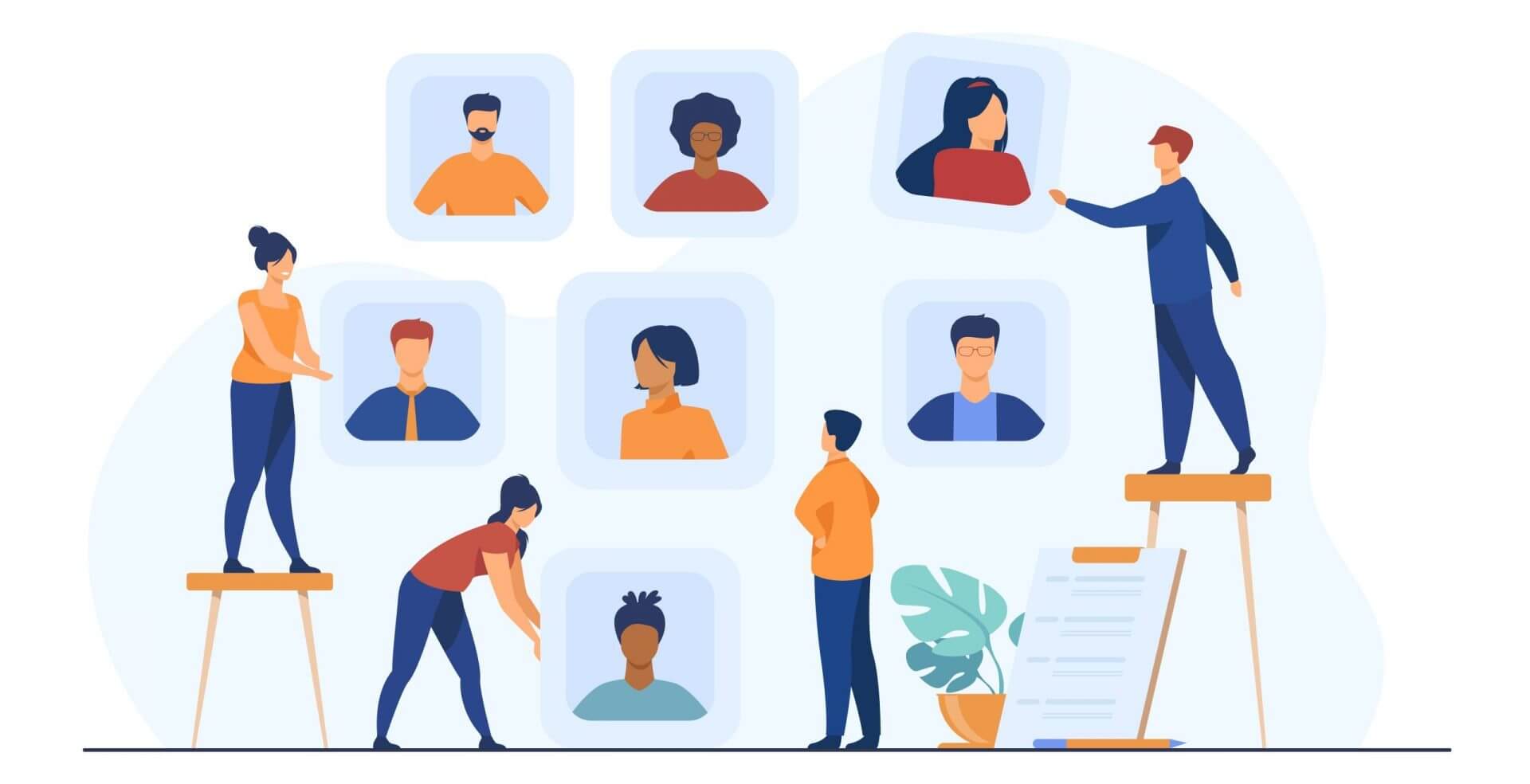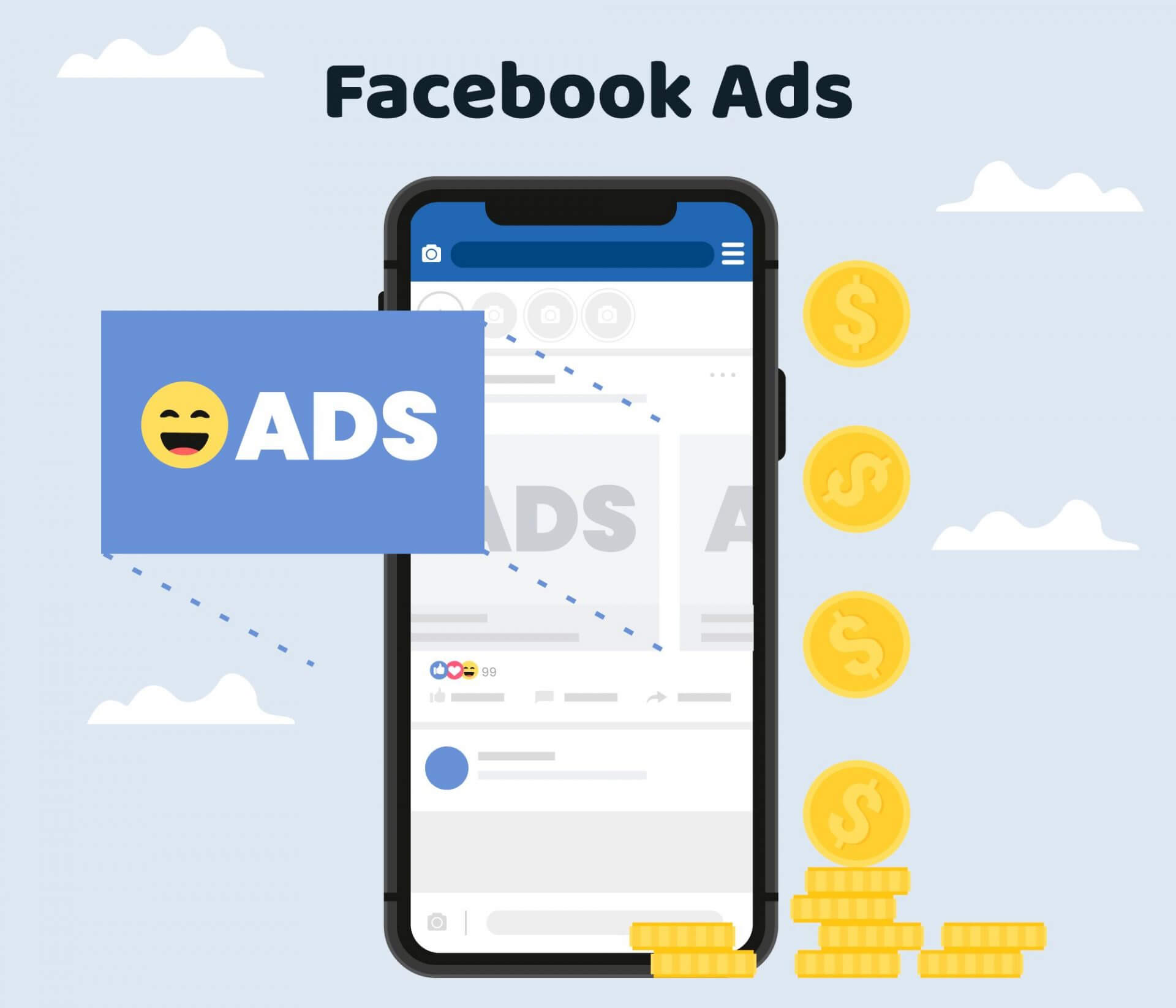Want a heads up when a new story drops? Subscribe here.
A lot of talk has been going about Apple’s iOS 14 release and how it may affect Facebook and Instagram advertising. The new policy that will take into effect in early 2021 allows users to choose whether apps are tracking them and enables them to limit how much of their personal data that is collected and shared.
They can also turn off the “Allow apps to request to track” which means that applications will not even ask them to collect data. Apple’s new policy will affect visibility into metrics that enable businesses to see whether ads drive more sales and installs. Here is what app conversions businesses can track, what this means for them, and whether and to what extent Apple’s new policy can be a game changer.
Table of Contents
Conversions That Can be Tracked
Marketers can track different types of conversions for iOS and Android apps, including first opens, downloads from Google Play, and installs. With first opens, advertisers can see whether a user opens an app after clicking their ad. This option is available to marketers using third-party analytics software and Firebase. Downloads from Google Play can be tracked as well for users that clicked ads. This happens automatically, and there is no need to set up data collection for an app. A third way to determine whether ads drive conversions is to track purchases. This is an option for applications that use the Google Play’s billing system to sell subscriptions and one-time consumable and non-consumable products like level packs, premium upgrades, and in-game currency.
The Extent of Third Party Tracking
A study by researchers at Oxford University offers insights into how and what data from mobile phones is collected and shared. The study included 959,000 apps available from the UK and US Google Play stores and looked at the extent to which data is harvested across different categories. The research team found out that more than 90 percent of apps include at least one tracker and 17.9 percent collect and share data with more than 20 companies. The researchers also examined the extent of tracking across 8 broad categories:
- Education
- News
- Family
- Art and photography
- Communication and social
- Health and lifestyle
- Games and entertainment
- Productivity and tools
The largest number of companies is in the categories of family and news, and more than 20 percent of applications in the games and entertainment, family, and news genres are associated with 10+ tracking companies. The lowest number is within health and lifestyle, communication and social, education, and productivity and tools.
The study also focused on prevalence and found out that more than 90 percent of apps are associated with tracking companies operating in China, the U.S., Russia, Norway, the United Kingdom, and Singapore.
According to led researcher and computer scientist Reuben Binns, data sharing is out of control, and this is mainly due to the fact that developers moved away from direct sales and to a “freemium” model where the main source of revenue is advertising. In his view, marketers, developers, regulators, and end users are unaware of what is going on and the extent to which information is harvested and sold to brokers and advertisers. Data collected by apps flows to tech giants dominating the information technology industry, including Twitter, Facebook, Alphabet, Amazon, Microsoft, and Verizon.

CREDITS: THE MOST PREVALENT ROOT PARENT TRACKING COMPANIES AND THEIR SUBSIDIARIES, THIRD PARTY TRACKING IN THE MOBILE ECOSYSTEM BY REUBEN BINNS, ULRIK LYNGS, MAX VAN KLEEK, JUN ZHAO, TIMOTHY LIBERT , NIGEL SHADBOLT DEPARTMENT OF COMPUTER SCIENCE, UNIVERSITY OF OXFORD
How Tracking Benefits Businesses
Marketers use geolocation data to find out where users are and ultimately what products they are more likely to buy. As digital strategy adviser Rick Ducery wrapped it up, the places people go to are who they actually are. Even when mobile users are not sharing things like their age, profession, address, or whereabouts, marketers could learn plenty from the places people often go to. Do they make frequent visits to the library, gym, or mall? Living in a posh neighbourhood with a high concentration of well-to-do families? Having a picnic in the park every weekend or planning a backpacking trip? Each place users go to helps marketers to create a consumer profile for smart ad targeting.

Even based on how long a mobile has been put away and is still, advertisers know where users sleep which is most likely where they actually live. This helps them to determine which income class people are. Advertisers also know what content potential customers are viewing and the types of apps they have on their phones. Combining different bits of information such as places frequently visited, interests, income level, and whereabouts allows advertisers to target mobile users any time they browse content or search for products and services.
In the not too distant past, marketers mostly relied on demographic data such as ethnicity, education, income, and age. Professor of Internet Studies at the University of Michigan John Cheney-Lippold notes that today the focus is more on affinities that help develop a psychographic profile. Psychographics refers to the profiling of customers based on traits and characteristics such as lifestyle choices, interests, goals, desires, and values. This marketing approach aims to understand the cognitive and emotional responses that drive behavior, including political party affiliation, ethical and moral values, prejudices and biases, and inherent attitudes. There are different ways in which psychographic data is harvested, among which:
- Psycholinguistic dictionaries
- Quizzes, questionnaires, and surveys
- Interviews and focus groups
- Third-party analytics
- Social media posts, tweets, clicks, and likes
- Browsing data
- Website analytics
Psychographic profiling complements other marketing methods by developing potential buyer personas that businesses can focus on in their advertising and marketing strategies.

CREDITS: DESIGNED BY PCH.VECTOR @ FREEPIK
How Is Apple’s iOS 14 Release Going to Affect Your Ads?
For businesses that rely on Facebook ads, the new update is likely to result in less efficient targeting and advertising, with cost-per-result, cost-per-click, and frequency that customers see ads all being affected. Targeting options are likely to be weakened, making it more difficult for marketers to create personalized ads.
Facebook uses a wide array of demographics such as language, age, gender, location, relationship status, employment, life events, and political party affiliation. Other categories that help marketers to expand their ad reach include fitness and wellness, entertainment, business and industry, sports and outdoors, and shopping and fashion. If users choose not to allow the Instagram or Facebook app, then Facebook will not be able to collect data about their activity on websites accessed through the platform. This activity cannot be used to target visitors and track conversions.

CREDITS: FREEPIK
If mobile users choose not to allow the WhatsApp, Instagram, Messenger, and Facebook apps, as well as applications using the Audience Network, they will not be sharing data such as email info, advertising profiles, and location with third-party networks for audience lookalike ads and retargeting.
Lookalike audiences allow marketers to target users with interests and demographics that are similar to their existing customers and followers (custom audience). These can be Facebook page or website visitors, users on your email list, those who have installed your app, past customers, and in general, users that have already engaged with your business.
Retargeting is another strategy that enables marketers to remind potential customers of their brand, services, and products once they leave the website. Facebook dynamic ads, for example, remind visitors of purchases made and products browsed on Instagram Shopping, Marketplace, and via your mobile app or website. With dynamic ads, users see similar categories or the products they previously browsed. There are different retargeting options such as cross-selling, upselling, added to cart but not purchased, added to card or viewed but not purchased, and advertising to custom audiences. With the new policy that Apple is about to implement, marketers will not be able to build lookalike audiences or retarget customers because they won’t be capturing and targeting all the relevant traffic.
Who Will Be Affected
The new update is likely to affect Apple users, digital marketers, luxury designer brands, direct-to-consumer companies, small business owners, and mobile app developers. Small businesses that use paid advertising to market their products and services may find it increasingly difficult to connect with niche audiences. For Apple users that opt out of tracking, the ads they will be served will change from personalized to more generalized. Mobile app developers that rely on advertising as their main source of revenue will also be significantly impacted.
What Businesses Think
A 2020 survey by MMA Global and AppsFlyer, Apple, IDFA, and iOS14: New Challenges, New Opportunities for Marketers analyzed what marketers think about the upcoming opt-in requirement. The study found that about 37 percent of respondents had no or little understanding of the new update and its impact on advertising. Some 35 percent of marketers said they were somewhat familiar, and only 6 percent were very familiar. More than half of the participants (53 percent) expect that the impact of the new update will be somewhat or very negative. The share is even higher among marketers who are familiar with the opt-in requirement – 73 percent of all respondents expect that it will have a negative impact on their marketing capabilities.
For advertisers, capabilities that will be the most impacted include audience targeting and remarketing (34 percent), cross-device measurement (31 percent), conversion measurement (20 percent), and multi-touch attribution (31 percent).

Other capabilities that are likely to be challenged include contextual targeting, impression verification and management, frequency capping, and dynamic creative optimization. When asked about the long-term effects of the new policy, 61 percent of app developers and publishers stated that investing in content marketing would be more difficult. The overwhelming majority or 74 percent of respondents believe that they are going to face a drop in advertising revenue. As marketers are preparing for these changes, 39 percent plan to cut their mobile ad budgets while 47 percent consider allocating spending to other channels.

Going Forward
Brands and marketers have long relied on consumer data to run successful campaigns, including offline and app interactions and website visits. Because of growing data privacy concerns, a number of changes have either been introduced or are about to be implemented, including the California Consumer Privacy Act, Safari’s iOS 14 Update, and Safari’s Intelligent Tracking Prevention. For advertisers this means that it is more difficult to collect user interaction data to boost their marketing ROI. One of the solutions to make up for lost data is the Facebook Conversation API which enables businesses to share offline and web events directly with Facebook. Sharing transactional data directly can help improve the measurement and performance of campaigns.
This is how Facebook can deal with pixel tracking issues and enable businesses to retain transactional data. Say a potential customer has accessed your website from an iOS device and makes a purchase on desktop a couple of days later. For websites that have the Facebook Pixel, a code measuring customer activity, visitor data is stored in cookies and saved on the client’s server in the same way as Google Analytics client_id, user-agents, and IP addresses. The conversation API then transfers transaction data from the server to the client’s Facebook pixel. Data that can be tracked this way includes:
- Subscription changes
- Email subscriptions
- Purchases
- Form subscriptions
- Affiliate payments
- Leads
It is important to note that Facebook isn’t the only platform to be affected by the new iOS 14 update but so will Google, Spotify, YouTube, TikTok, Snapchat, LinkedIn, and Pinterest. Using different platforms for ad marketing can help reach wider audiences. It is also a good time to analyze the extent to which iOS users are impacting your business, including the share of leads and purchases made from iOS devices. This will help you to gain understanding of how your marketing strategy might be impacted.
Luring consumers to share location data is also a good idea, as one consumer survey for the travel sector suggests. The Boxever poll which included more than 507 U.S. consumers found out that over 60 percent of participants prefer personalized offers based on where they are and what they are doing. At the same time, 62 percent of respondents said they do not want to have their location tracked.
What marketers can do to encourage consumers to share location data is offer incentives in the form of discounts and cash rewards. Indeed, the Consumer Data Value Exchange report by Microsoft found that 64 percent of consumers are willing to exchange personal data for cash rewards. Some 49 percent would share data if offered significant discounts while 26 percent would exchange personal data for services that enable them to locate new products, content, and ideas. Consumers are less willing to share biometrics data (11 percent) than marital status, gender, and age (53 percent) and address and date of birth (56 percent).
While paid advertising can be an effective marketing strategy, brand loyalty is what makes customers keep coming back. It pays to look into the factors that help build loyalty and then focus on areas that need improvement.
A poll by KPMG that included 18,520 consumers reveals that product quality is the most important factor for 74 percent of customers, followed by value for money (66 percent), product consistency (65 percent), and customer service (56 percent). Other factors that influence brand loyalty include easy shopping experience (55 percent), product assortment and selection (55 percent), and pricing (54 percent). Loyal customers are more likely to leave positive feedback or recommend a brand or product. Indeed, the poll shows that 66 percent of consumers that consider themselves loyal to a brand are likely to write a positive review and 86 percent will recommend it to family and friends.

Takeaways
E-commerce businesses rely heavily on Instagram and Facebook ads, and there is a good reason for this – social media targeting is cost-effective, results in higher conversion rates, and increases inbound traffic.
With Apple’s latest update, however, it is in everyone’s best interest to find the right tactic to promote their brand and business and reach new customers. One way to go about this and get more marketing mileage out of your content is to diversify your budget between different forms of advertising, be it direct email, email marketing, web display ads, and social media ads.
Being aware of changing and new opportunities and grabbing your chance is the key to success, especially in turbulent times. Testing different channels and formats allows you to analyze what works best and what should go and adapt as market shifts occur.
Focusing on what customers value – product quality and consistency, customer service, and seamless shopping experience – helps increase robustness to competition. Shopping cuts across geographic and political borders, mobile, the Internet, and the physical world. It’s everywhere you go. Algorithms evolve, the way privacy data is handled has changed, and people have also changed the way they shop. What customers want, knowingly or unconsciously, is a level of personalization, easy access, convenience, reliability, and freedom of choice.
Sources used:
https://arxiv.org/pdf/1804.03603.pdf
https://www.appsflyer.com/gatedpdfs/pdfs/AppsFlyer-MMA-IDFA-Marketer-Readiness_11-16-20.pdf
https://www.boxever.com/press-release-consumers-losing-confidence-in-retailers-ability-to-effectively-leverage-personal-data-according-to-boxever-survey/
https://news.microsoft.com/apac/2015/06/03/microsoft-research-reveals-understanding-gap-in-the-brand-consumer-data-exchange/#:~:text=The%20Consumer%20Data%20Value%20Exchange,them%20without%20their%20explicit%20consent
https://home.kpmg/xx/en/home/insights/2019/11/customer-loyalty-survey.html
https://www.adroll.com/blog/marketing/how-to-prepare-your-e-commerce-business-for-apples-ios-14-update
https://apps.bostonglobe.com/business/graphics/2018/07/foot-traffic/




